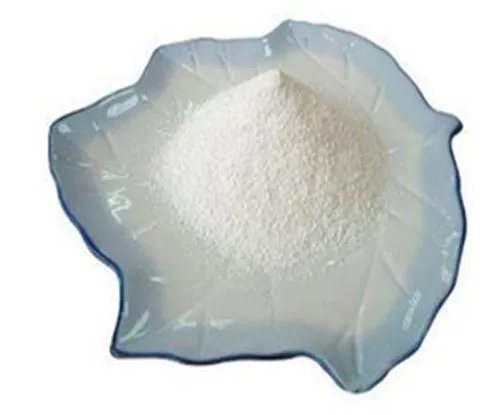Warning: Undefined array key "title" in /home/www/wwwroot/HTML/www.exportstart.com/wp-content/themes/1198/header.php on line 6
Warning: Undefined array key "file" in /home/www/wwwroot/HTML/www.exportstart.com/wp-content/themes/1198/header.php on line 7
Warning: Undefined array key "title" in /home/www/wwwroot/HTML/www.exportstart.com/wp-content/themes/1198/header.php on line 7
Warning: Undefined array key "title" in /home/www/wwwroot/HTML/www.exportstart.com/wp-content/themes/1198/header.php on line 7
- Afrikaans
- Albanian
- Amharic
- Arabic
- Armenian
- Azerbaijani
- Basque
- Belarusian
- Bengali
- Bosnian
- Bulgarian
- Catalan
- Cebuano
- China
- China (Taiwan)
- Corsican
- Croatian
- Czech
- Danish
- Dutch
- English
- Esperanto
- Estonian
- Finnish
- French
- Frisian
- Galician
- Georgian
- German
- Greek
- Gujarati
- Haitian Creole
- hausa
- hawaiian
- Hebrew
- Hindi
- Miao
- Hungarian
- Icelandic
- igbo
- Indonesian
- irish
- Italian
- Japanese
- Javanese
- Kannada
- kazakh
- Khmer
- Rwandese
- Korean
- Kurdish
- Kyrgyz
- Lao
- Latin
- Latvian
- Lithuanian
- Luxembourgish
- Macedonian
- Malgashi
- Malay
- Malayalam
- Maltese
- Maori
- Marathi
- Mongolian
- Myanmar
- Nepali
- Norwegian
- Norwegian
- Occitan
- Pashto
- Persian
- Polish
- Portuguese
- Punjabi
- Romanian
- Russian
- Samoan
- Scottish Gaelic
- Serbian
- Sesotho
- Shona
- Sindhi
- Sinhala
- Slovak
- Slovenian
- Somali
- Spanish
- Sundanese
- Swahili
- Swedish
- Tagalog
- Tajik
- Tamil
- Tatar
- Telugu
- Thai
- Turkish
- Turkmen
- Ukrainian
- Urdu
- Uighur
- Uzbek
- Vietnamese
- Welsh
- Bantu
- Yiddish
- Yoruba
- Zulu
Dec . 24, 2024 05:12 Back to list
Exploring the Properties and Uses of 85% Diethanolamine in Various Industries
Understanding Diethanolamine 85 Properties, Applications, and Safety
Diethanolamine, often abbreviated as DEA, is an organic compound with the chemical formula C4H11NO2. It belongs to a class of chemicals known as alkanolamines, which are widely used in various industrial and commercial applications. One specific formulation, Diethanolamine 85, contains approximately 85% of the active DEA component, making it a highly concentrated form of this versatile chemical.
Properties of Diethanolamine 85
Diethanolamine 85 is a viscous, colorless liquid with a characteristic amine odor. It has a boiling point of about 290 degrees Celsius and is soluble in water, making it an attractive solvent for various applications. Its chemical structure, which includes both alcohol and amine functional groups, allows it to interact with a wide range of other substances, enhancing its utility in different fields.
Due to its ability to form hydrogen bonds, Diethanolamine 85 exhibits surfactant properties. This property plays a significant role in its effectiveness as an emulsifier and wetting agent in many formulations. Additionally, its relatively high pH makes it useful as a buffering agent in cosmetic formulations and pharmaceuticals.
Applications of Diethanolamine 85
The versatility of Diethanolamine 85 lends itself to many applications across different industries. One of the primary uses is in the manufacturing of detergents and cleaning agents. Its surfactant properties allow it to effectively reduce surface tension, facilitating the cleaning process and enhancing the spreadability of products.
In addition to cleaning applications, Diethanolamine 85 is commonly used in the production of personal care products, such as shampoos and lotions. Its ability to stabilize emulsions contributes to a smoother application and enhances the overall performance of these products. Furthermore, it acts as a pH balancer, helping to maintain the desired acidity or alkalinity in formulations.
diethanolamine 85

Another significant application of Diethanolamine 85 is in the field of agriculture. It is utilized as a chemical intermediate in the formulation of various pesticides and herbicides. Its role as a solubilizer helps in the effective delivery of active ingredients, ensuring better performance and efficacy.
Moreover, Diethanolamine 85 is important in the oil and gas industry, where it is used in gas treatment processes. It serves as a scrubbing agent to remove acidic gases, such as carbon dioxide and hydrogen sulfide, from natural gas streams, improving the quality of the gas before it is sold or processed further.
Safety Considerations
While Diethanolamine 85 has many beneficial applications, it is essential to handle it with care. The compound is classified as a mild irritant to the skin, eyes, and respiratory tract. Therefore, personal protective equipment (PPE) should always be used when working with this chemical. Proper ventilation in workspaces is also necessary to minimize inhalation risks.
In recent years, there has been some environmental concern regarding the potential formation of nitrosamines when DEA is exposed to nitrosating agents. Nitrosamines are known for their carcinogenic properties, prompting regulatory agencies to monitor the use and handling of products containing DEA. Consequently, manufacturers are encouraged to implement safety measures and follow best practices to mitigate risks associated with exposure.
Conclusion
In summary, Diethanolamine 85 is a versatile and widely used compound with important applications in various industries, including personal care, cleaning products, agriculture, and oil and gas. Its properties as a surfactant and emulsifier make it invaluable in formulations, while safety precautions are paramount in ensuring its responsible use. As industries continue to evolve, the role of Diethanolamine 85 remains essential, highlighting the need for continued research and adherence to safety protocols to protect human health and the environment.
Latest news
-
Certifications for Vegetarian and Xanthan Gum Vegetarian
NewsJun.17,2025
-
Sustainability Trends Reshaping the SLES N70 Market
NewsJun.17,2025
-
Propylene Glycol Use in Vaccines: Balancing Function and Perception
NewsJun.17,2025
-
Petroleum Jelly in Skincare: Balancing Benefits and Backlash
NewsJun.17,2025
-
Energy Price Volatility and Ripple Effect on Caprolactam Markets
NewsJun.17,2025
-
Spectroscopic Techniques for Adipic Acid Molecular Weight
NewsJun.17,2025

